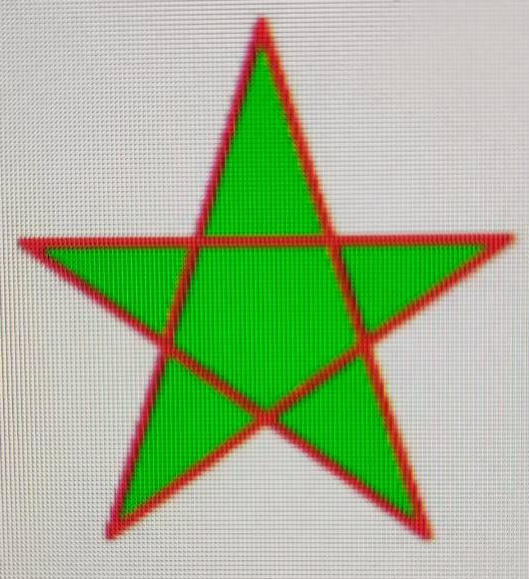harmony 鸿蒙Drawing and Display Sample
Drawing and Display Sample
Overview
You have learned how to call the APIs provided by NativeDrawing to draw 2D graphics in Drawing Development. In this topic, you will learn how to display 2D graphics on the screen by using the capabilities provided by NativeWindow and <XComponent>.
How to Develop
The following walks you through on how to use the canvas and brush of the NativeDrawing module to draw a basic 2D graphic, write the graphics content to the buffer provided by NativeWindow, and flush the buffer to the graphics queue. During this process, the <XComponent> is used to connect the C++ code layer to the ArkTS layer so that the drawing and display logic is called at the ArkTS layer to display the graphic on the screen.
Adding Dynamic Link Libraries
Add the following libraries to CMakeLists.txt:
libace_napi.z.so
libace_ndk.z.so
libnative_window.so
libnative_drawing.so
Including Header Files
#include <ace/xcomponent/native_interface_xcomponent.h>
#include "napi/native_api.h"
#include <native_window/external_window.h>
#include <native_drawing/drawing_bitmap.h>
#include <native_drawing/drawing_color.h>
#include <native_drawing/drawing_canvas.h>
#include <native_drawing/drawing_pen.h>
#include <native_drawing/drawing_brush.h>
#include <native_drawing/drawing_path.h>
#include <cmath>
#include <algorithm>
#include <stdint.h>
#include <sys/mman.h>
Obtain an OHNativeWindow instance as the carrier for displaying the graphic.
- Add an <XComponent> to the .ets file.
ts XComponent({ id: 'xcomponentId', type: 'surface', libraryname: 'entry'}) - Obtain NativeXComponent at the native C++ layer.
c++ // Obtain the ID of the <XComponent>. char idStr[OH_XCOMPONENT_ID_LEN_MAX + 1] = {}; uint64_t idSize = OH_XCOMPONENT_ID_LEN_MAX + 1; napi_value exportInstance = nullptr; // Parse the attribute of the wrapped NativeXComponent pointer. napi_get_named_property(env, exports, OH_NATIVE_XCOMPONENT_OBJ, &exportInstance); OH_NativeXComponent *nativeXComponent = nullptr; // Use the napi_unwrap API to parse the NativeXComponent instance pointer. napi_unwrap(env, exportInstance, reinterpret_cast<void**>(&nativeXComponent));- Define OH_NativeXComponent_Callback.
c++ // Declare a NativeXComponent callback. OH_NativeXComponent_Callback callback; // Register the OnSurfaceCreated callback function. callback.OnSurfaceCreated = OnSurfaceCreatedCB; - Register OH_NativeXComponent_Callback with NativeXComponent.
c++ // Register the callback function and implement the drawing and display logic in it. When the <XComponent> at the ArkTS layer is called, the logic is invoked through the callback function. OH_NativeXComponent_RegisterCallback(nativeXComponent, &callback);
- Define OH_NativeXComponent_Callback.
- Add an <XComponent> to the .ets file.
Obtain the OHNativeWindow instance, which is used as the carrier for displaying the graphic.
Set the attributes of an OHNativeWindowBuffer by using OH_NativeWindow_NativeWindowHandleOpt.
// Obtain an OHNativeWindow instance. OHNativeWindow* nativeWindow = static_cast<OHNativeWindow*>(window); // Set the width and height of the OHNativeWindowBuffer. int32_t code = SET_BUFFER_GEOMETRY; uint64_t width; uint64_t height; int32_t ret = OH_NativeXComponent_GetXComponentSize(component, window, &width, &height); // The nativeWindow instance is obtained from the callback in the previous step. ret = OH_NativeWindow_NativeWindowHandleOpt(nativeWindow, code, width, height); // Set the step of the OHNativeWindowBuffer. code = SET_STRIDE; int32_t stride = 0x8; ret = OH_NativeWindow_NativeWindowHandleOpt(nativeWindow, code, stride);Request an OHNativeWindowBuffer from the graphics queue.
OHNativeWindowBuffer* buffer = nullptr; int fenceFd; // Obtain the OHNativeWindowBuffer instance by calling OH_NativeWindow_NativeWindowRequestBuffer. OH_NativeWindow_NativeWindowRequestBuffer(nativeWindow, &buffer, &fenceFd); // Obtain the buffer handle by calling OH_NativeWindow_GetBufferHandleFromNative. BufferHandle* bufferHandle = OH_NativeWindow_GetBufferHandleFromNative(buffer);Map memory.
// Use mmap() to obtain the memory virtual address of the buffer handle. uint8_t *mappedAddr = static_cast<uint8_t *>(mmap(bufferHandle->virAddr, bufferHandle->size, PROT_READ|PROT_WRITE, MAP_SHARED, bufferHandle->fd, 0)); if (mappedAddr == MAP_FAILED) { // mmap failed }
Use the APIs provided by NativeDrawing to draw a pentagon-shaped 2D graphic. For details, see Drawing Development.
Use the APIs provided by NativeWindow to display the 2D graphic on the screen.
- Write the drawing content to the OHNativeWindowBuffer.
c++ uint8_t *bitmapAddr = static_cast<uint8_t *>(OH_Drawing_BitmapGetPixels(cBitmap)); std::copy(bitmapAddr, bitmapAddr + (width * height * 4), mappedAddr); - Flush the OHNativeWindowBuffer to the graphics queue.
c++ // Set the refresh region. If Rect in Region is a null pointer or rectNumber is 0, all contents in the OHNativeWindowBuffer are changed. Region region{nullptr, 0}; // Flush the buffer to the consumer through OH_NativeWindow_NativeWindowFlushBuffer, for example, by displaying it on the screen. OH_NativeWindow_NativeWindowFlushBuffer(nativeWindow, buffer, fenceFd, region); - Unmap memory.
c++ // Unmap the memory when the memory is no longer required. int result = munmap(mappedAddr, bufferHandle->size); if (result == -1) { // munmap failed }
The figure below shows the display effect of the graphic.

- Write the drawing content to the OHNativeWindowBuffer.
你可能感兴趣的鸿蒙文章
harmony 鸿蒙Hardware Compatibility
harmony 鸿蒙Using MindSpore Lite for Model Inference
harmony 鸿蒙Using MindSpore Lite for Offline Model Conversion and Inference
harmony 鸿蒙Using Native APIs in Application Projects
harmony 鸿蒙NativeBuffer Development
- 所属分类: 后端技术
- 本文标签: